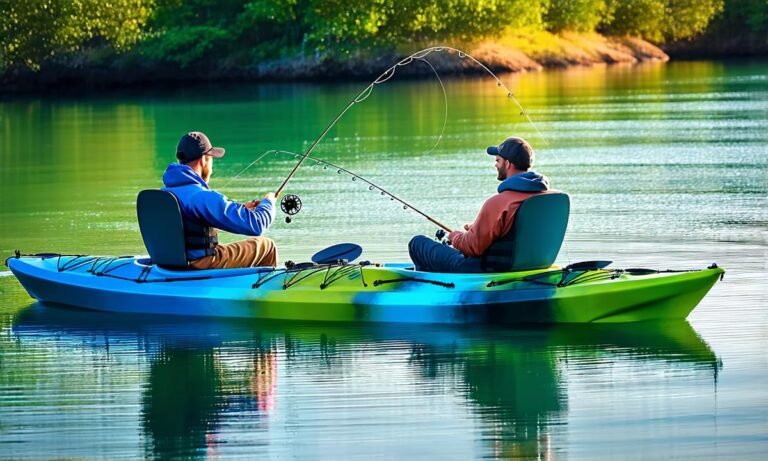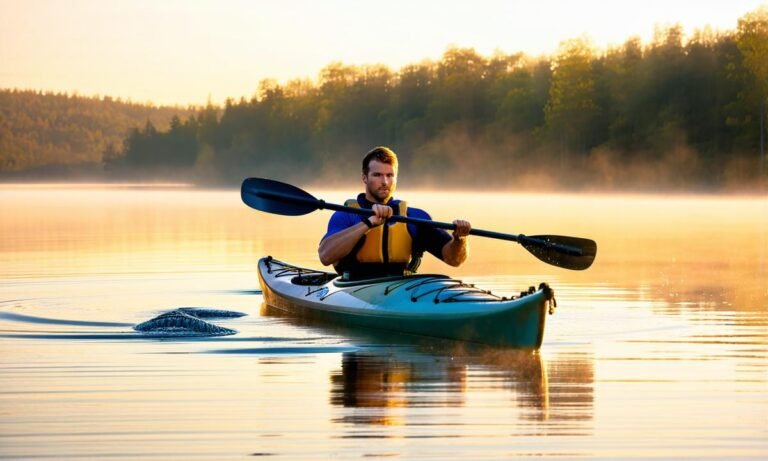What to Wear Kayaking in the Summer: 7 Essential Tips
Kayaking on a hot summer day is one of the best ways to connect with nature while staying active. Choosing the right clothing makes all the difference between discomfort and pure enjoyment as you paddle through serene waters.
So, what to wear kayaking in the summer? Opt for lightweight, moisture-wicking fabrics that keep you cool and dry. Quick-drying swimsuits paired with protective accessories like hats and sunglasses help shield against sun exposure without sacrificing comfort.
If you’re curious about specific gear recommendations and tips for layering, stay tuned. The right outfit not only enhances your experience but also keeps safety in mind during those thrilling paddling adventures ahead.
What Are the Essential Clothing Items for Summer Kayaking?

When it comes to summer kayaking, selecting the right clothing can make a world of difference. A well-thought-out outfit not only enhances comfort but also ensures safety and enjoyment while you paddle under the sun.
The foundation of your kayaking attire begins with moisture-wicking shirts. These shirts keep sweat away from your body, allowing you to stay comfortable even during intense paddling sessions. Look for fabrics like polyester or nylon that dry quickly and resist clinginess.
Choosing Your Bottoms: Shorts vs. Pants
Your choice of bottoms should prioritize mobility and comfort. Quick-drying shorts are popular among kayakers because they provide freedom of movement and dry fast after splashes or rain. Alternatively, consider lightweight waterproof pants if you’re navigating unpredictable waters where splashing is likely.
A Layering Strategy for Temperature Changes
The weather can be unpredictable on water bodies. Hence, layering is essential. A lightweight long-sleeve shirt made from breathable fabric serves as an excellent first layer against unexpected chill and UV rays alike. Adding a light jacket made from wind-resistant material helps combat sudden breezes without weighing you down.
“Wearing layers can significantly enhance comfort levels when out in changing weather conditions.” — Outdoor Gear Lab
Paddling Accessories That Matter
No kayaking outfit is complete without accessories that protect against sun exposure and elements. Hats, particularly those with wide brims, shield your face from UV rays while providing some relief by keeping cool air flowing around your head.
- Sunglasses: Choose polarized sunglasses that reduce glare off the water’s surface; this protects your eyes during long hours under sunlight.
- Sunscreen: Apply broad-spectrum sunscreen generously before heading out, especially on exposed areas like arms, necks, and faces.
Selecting appropriate clothing items for summer kayaking is crucial for maximizing enjoyment on the water while ensuring safety against nature’s elements. Invest wisely in these essentials to enjoy every moment spent paddling!
How to Choose Footwear That Keeps You Comfortable While Kayaking?
Selecting the right footwear for kayaking in summer is essential for comfort and safety. The wrong shoes can lead to discomfort or even accidents on the water.
Your ideal kayaking footwear should prioritize functionality, grip, and protection. Wet conditions often make a solid non-slip sole crucial. Many kayakers find that water shoes or sandals with good traction excel in this setting.
The Importance of Drainage
Footwear designed specifically for water activities tends to feature drainage holes. These allow excess water to escape, preventing your feet from feeling heavy and uncomfortable. Shoes like these dry quickly after taking an unexpected dip into the lake!
Additionally, consider quick-drying materials such as mesh or synthetic fabrics when choosing your kayak shoes. Unlike cotton, which retains moisture, these materials keep your feet dryer for longer periods during hot days.
“Wearing appropriate footwear dramatically improves balance and control while kayaking.” — American Canoe Association
Choosing Between Different Styles
- Sneakers: If you prefer more foot support, lightweight sneakers work well but may not drain effectively in case of getting wet.
- Aquatic Sandals: Designed with straps that secure around the heel and instep offer breathability while ensuring they stay on during movement.
- Crocs: These have become increasingly popular among paddlers; their buoyancy makes them difficult to lose if they fall off while out on the water!
While selecting between styles comes down to personal preference, always prioritize options providing adequate traction. This guarantees stability whether you’re stepping onto a slippery dock or pulling your kayak ashore.
Safety Considerations
Your choice of footwear impacts more than just comfort—it also relates directly to safety! A sturdy grip prevents slips when entering or exiting your kayak; look for outsoles made from rubber compounds known for superior grip performance.
If there’s even a slight chance you’ll encounter sharp rocks or oyster beds along shorelines—or experience unpredictable weather—choose shoes offering additional padding and protection over exposed toes!
5 Advanced Tips for Staying Cool and Safe During Summer Paddling
Paddling under the summer sun brings joy, but safety and comfort are essential. Here are five tips to help you stay cool while ensuring a safe experience on the water.
1. Hydrate Wisely
Staying hydrated is vital during any outdoor activity. Dehydration can sneak up on you when you’re having fun in the sun. Aim to drink at least one liter of water every two hours, even if you don’t feel thirsty.
Add electrolyte-rich drinks to your hydration routine, especially after heavy sweating. This simple step helps replenish lost minerals and keeps energy levels high during your adventure.
2. Timing Your Trip
The timing of your kayaking trip can significantly impact comfort levels. Early mornings or late afternoons offer cooler temperatures and less intense sunlight compared to midday heat.
I often schedule my outings around sunrise or sunset, enjoying calmer waters alongside breathtaking views while avoiding extreme conditions.
3. Use Cooling Towels
Cooling towels have become a go-to accessory among paddlers for good reason. Simply wet them before heading out, then drape them around your neck or over other pulse points like wrists and temples; they provide relief by evaporating moisture against your skin.
“Cooling towels keep me refreshed during long paddles under the scorching sun.” — Sarah Jensen, Kayaking Enthusiast
4. Read Water Conditions Before You Go
You should always assess weather conditions prior to launching from shore. Keep an eye on temperature forecasts as well as wind gusts that may arise unexpectedly throughout the day.
| Date/Time | Temp (°F) | Wind Speed (mph) |
|---|---|---|
| 9 AM | 75°F | 5 mph |
| Noon | 85°F | 12 mph |
| 4 PM | 80°F | 8 mph |
5. Know Basic Safety Skills & Emergency Plans
A firm grasp of basic safety skills makes any kayaking adventure safer for everyone involved! Always wear life jackets properly fitted considering local regulations—it’s not just smart but mandatory in many areas!
- If possible, take a quick course in first aid or CPR before heading on longer trips—being prepared pays off!
- Create clear emergency communication plans with fellow adventurers so each person knows how to react if something goes wrong along the route.
This combination of preparation and knowledge ensures that unexpected situations won’t derail your fun! With these advanced tips in hand, you’ll be ready for exciting yet safe summer kayaking adventures ahead!
FAQs
What fabrics are best for summer kayaking clothing?
Look for lightweight, breathable materials like polyester or nylon. These fabrics wick moisture away and dry quickly, keeping you comfortable during hot weather while reducing chafing from sweat.
Should I bring extra clothes for my kayaking trip?
Yes, packing extra clothes is wise in case of unexpected splashes or changes in temperature. Quick-drying options ensure you’re prepared to stay comfortable throughout your adventure.
What sun protection gear should I consider?
A wide-brimmed hat and polarized sunglasses are essential sun protection items. They help shield your skin and eyes from harmful UV rays while enhancing your overall comfort on the water.


